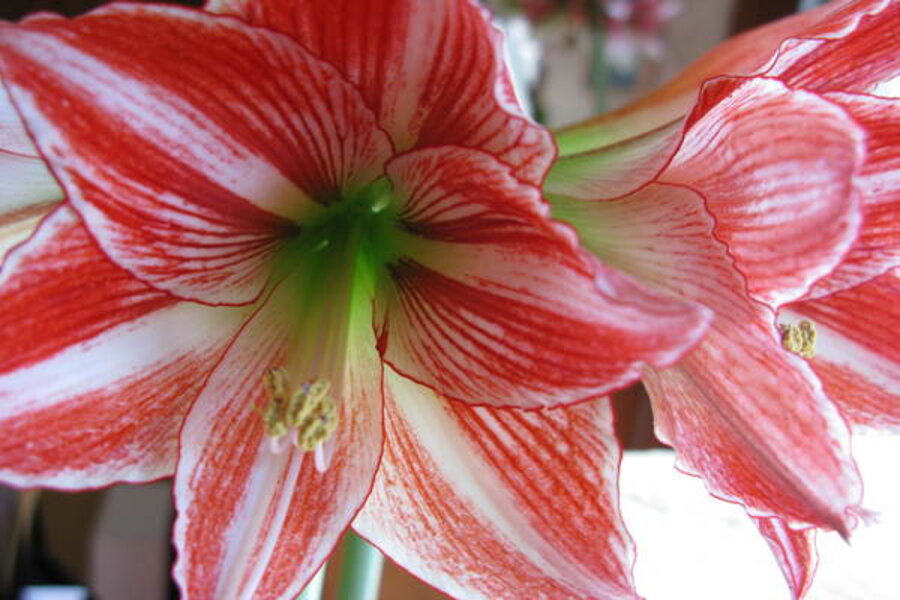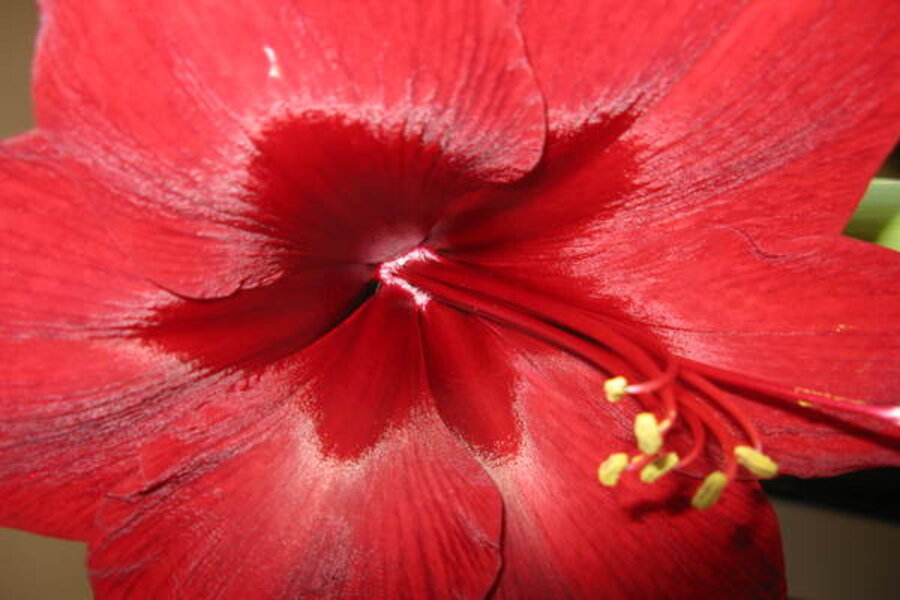Amaryllis: The bulb's source matters
Loading...
Just the other day, at my local garden club meeting, a member mentioned how disappointed she was with her amaryllis (Hippeastrum) bulbs.
Now I am nuts about amaryllis, grow them by the dozen. So I was intrigued as to the problem.
They are, after all, audacious, tropical-looking flowers for those seeking a little easy-to-love indoor cheer in the dreary days of winter. The fact that they are also one of the easiest of bulbs for forcing can’t be over-looked, either.
With their large, exquisitely formed single or double flowers in bold shades of red, bright pink, orange or bi-color and blossoms in subdued shades of pink, rose, salmon and white that are flushed, flamed, or veined in bold coloration sitting high atop thick spring- green stems, these flowers are nothing short of sophistication and class.
So, what was the problem?
My club member friend had purchased six ‘Temptation’ bulbs, potted them in early November, almost eight weeks before Christmas, with the intent of using the blooming plants as her dining room decorations over the holidays.
But, come Christmas, the bulbs sat there with just a smidgen of bud tips barely sticking out – with none of the highly anticipated flowers.
“Where did I go wrong?” she wanted to know.
Unfortunately, her choice of cultivar was her undoing.
Dutch bulbs
Most amaryllis bulbs sold to the consumer are greater than eight inches (20 cm) in circumference and are either Dutch, South African, or Israeli-grown. Typically, they sport two to six flowers per stalk, with the average being four. Plant heights range from 18 to 36 inches, depending on the cultivar, the country in which the bulb was produced, and the conditions in which you grow it at home.
Dutch growers have perfected the art of growing amaryllis. Bulbs grown in the Netherlands are kept in greenhouses and have dormancy artificially induced by cutting off their foliage and drying them – a procedure that doesn’t give the bulb much time to rest.
Best potted from October through February, it will take the typical bare-root Dutch amaryllis bulb eight to 12 weeks to flower, so these bulbs generally are not expected to produce flowers earlier than January, mostly too late for the holiday season festivities.
Some Dutch cultivars include ‘Ambiance’, ‘San Remo’, ‘Exotic Star’, ‘Picotee’, ‘Rosalie’, and many others.
As any gardener knows, nature can be a trickster at times, so some varieties of Dutch bulbs that might pop out of dormancy a bit quicker than the rest include ‘Apple Blossom’, ‘Gervase’, ‘Red Pearl’, ‘Floris Hecker’, the Dutch doubles and Dutch miniatures. But that’s not a given.
South African and Israeli bulbs
If you want an amaryllis cultivar to flower reliably by Christmas, look for bulbs grown in South Africa, such as ‘Basuto’, ‘Blushing Bride’, ‘Wedding Dance’, ‘Candy Floss’, ‘Cocktail’, ‘Alfresco’, ‘Zombie’, or ‘Rock ‘n Roll’, as well as others.
These have gone through their normal growth cycle, the buds are formed and they have been out of the ground since May, so all you have to do is pot them up in September and be assured of blooms by December.
Bulbs grown in Israel have also been given enough resting time so that they, too, can flower reliably by Christmas. However, in Israel, plants are grown mostly by color, rather than cultivar. So you can find amaryllis in red, pink or white, but may not find that special cultivar you absolutely have to have.
So, had my garden club member friend picked a bulb from South Africa, she would not have had to make a mad dash to the local florist for some flowers for the holiday table.
[Editor's note: To read about how size matters when you select amaryllis bulbs, click here.]
-----
Betty Earl, the Intrepid Gardener, blogs regularly at Diggin' It. She's the author of “In Search of Great Plants: The Insider’s Guide to the Best Plants in the Midwest.” She also writes a regular column for Chicagoland Gardening Magazine and The Kankakee Journal and numerous articles for Small Gardens Magazine, American Nurseryman, Nature’s Garden, and Midwest Living Magazine, as well as other national magazines. She is a garden scout for Better Homes and Gardens and a regional representative for The Garden Conservancy. To read more by Betty, click here.






